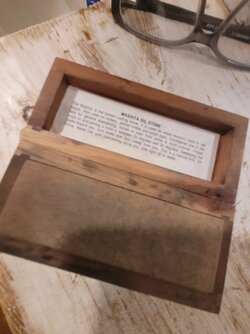My measurements (made at darn close to 60F 15.5556C ambient but I didn't stick a thermometer in the water bath):
Spyderco - M | 437g mass | 139g H2O displacement | 3.14 g/ml density
Spyderco - F | 496g mass | 137g H2O displacement | 3.62 g/ml density
Al2O3 standard density is 3.95 g/ml
The Wikipedia article uses 'aluminium', not 'aluminum' so I suppose we should play by the rules of Oz and use the oversize degrees of temperature and the un-oceanic freezing point of fresh water.
@captaincaed I would say we are in good agreement.
I do wonder what molecule(s) makes the Medium hone so dark and much less dense.
Spyderco - M | 437g mass | 139g H2O displacement | 3.14 g/ml density
Spyderco - F | 496g mass | 137g H2O displacement | 3.62 g/ml density
Al2O3 standard density is 3.95 g/ml
The Wikipedia article uses 'aluminium', not 'aluminum' so I suppose we should play by the rules of Oz and use the oversize degrees of temperature and the un-oceanic freezing point of fresh water.
@captaincaed I would say we are in good agreement.
I do wonder what molecule(s) makes the Medium hone so dark and much less dense.
